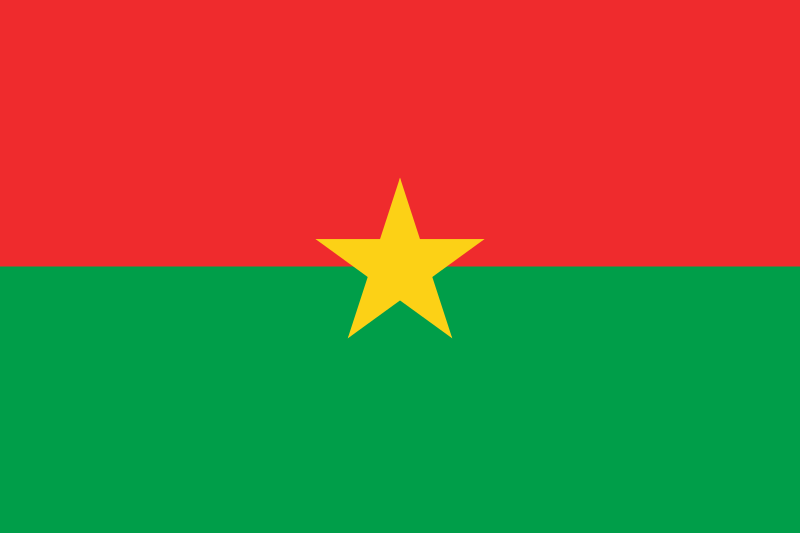Humanitarian situation report for children in Burkina Faso

Capital: Ouagadougou
Area: 274,200 km²
Population: 21,735,819
Form of government: Parliamentary republic
Burkina Faso is a former French colony, surrounded by Mali, Niger, Ivory Coast, Togo and Ghana. The country, which gained independence on August 5, 1960, was called Upper Volta until 1984. While the Mossis are the most populous group in the country at 40%, the rest of the population is made up of Gurunsi, Senufo, Lobi, Bobo, Mandé and Fulani. The number of children under 14 in the country is 9,274,847, or 42.6%. Children under 18 make up half of the country's population.
According to 2019, 54 out of every 1,000 newborns, 76 out of every 1,000 children under the age of five, and 320 out of every 100,000 mothers die in Burkina Faso. Malaria and infectious diseases remain killers of children. It is very difficult for children to access health centers in Burkina Faso. Some people cannot go to a health facility throughout their lives; the fact that health services are paid puts a large part of the poor population in a difficult position. In addition, 17,000 children between the ages of 0 and 14 live with HIV/AIDS in the country.
People migrate to Côte d'Ivoire and Ghana every year due to unemployment. The income received from remittances from citizens working abroad, especially in Côte d'Ivoire, ranks first among the inputs. Burkina Faso's economy is based on agriculture and animal husbandry. However, only 10% of its land can be cultivated.
Burkina Faso is one of the poorest countries in the world. In a country where there are two seasons, one rainy and the other dry, droughts and floods are frequent; this directly affects the poverty rate. Although the country is poor, its economic potential is very high. The main inputs to the economy are gold, cotton, sesame and agriculture, which are also areas where children work intensively. Half of the workers in gold mines are children under the age of 18. The same rate applies to other sectors. According to the International Labor Organization, the rate of child labor in the country is 51%. By forcing children to work, they are not only deprived of education, but their physical and emotional development is also seriously affected by these dangerous jobs. The toxicity of mercury in gold mines and other chemicals and pesticides used in the cotton industry pose a major threat to children's health. It is essential to register children and give them identity rights to ensure their access to health services, education, inheritance rights and many other opportunities. However, the percentage of children under the age of five registered in the country does not exceed 77%. In addition, according to 2020, the primary school completion rate is 64% and the secondary school completion rate is 45%.
There are 840,000 orphaned children in the country. Thousands of these children have lost their parents to AIDS, and some have been abandoned by their families due to economic problems. Ambo, Orfanato Home Kesito, Save the Children Burkina Faso, Orphelinate Nomdo, and Carmen Kesito are some of the orphanages in the country. Save the Children Burkina Faso, Children Believe Burkina, Plan Burkina, and SOS Children's Village Dapaong are some of the NGOs working for children in the country.
Sources:
ALBAYRAK, Ayşenur. “Afrika’da İnsanî Durum”. İnsamer. (Haziran 2021). https://www.insamer.com/tr/uploads/pdf/insamer-2021-_-afrikada-insani-durum-raporu-web-3.pdf. (17.11.2021).
Humanium. “Children of Burkina Faso”. https://www.humanium.org/en/burkina-faso/. (17.11.2021).
İNSAMER. “Burkina Faso”. https://www.insamer.com/tr/ulke-profili-burkina-faso/. (17.11.2021).
SOS CHİLDREN’S VILLAGES. “General Information on Burkina Faso”. https://www.sos-childrensvillages.org/where-we-help/africa/burkina-faso. (29.11.2021).
THE WORLD BANK. “Primary Completion Rate, Total-Burkina Faso”. https://data.worldbank.org/indicator/SE.PRM.CMPT.ZS?locations=BF. (29.11.2021).
Worldometer. “Burkina Faso Population”. https://www.worldometers.info/world-population/burkina-faso-population/. (17.11.2021).